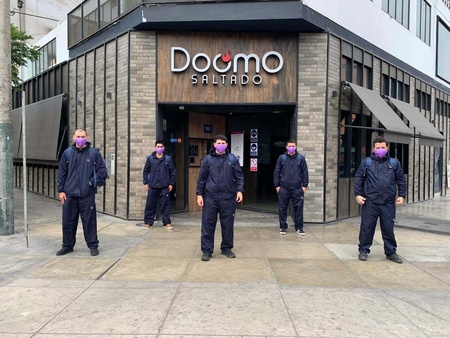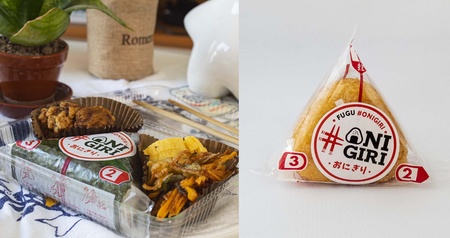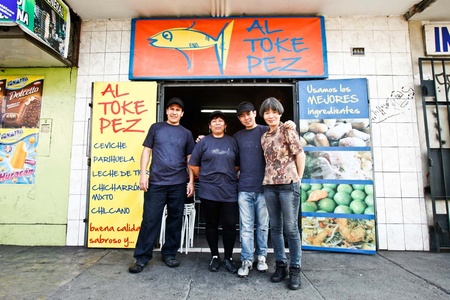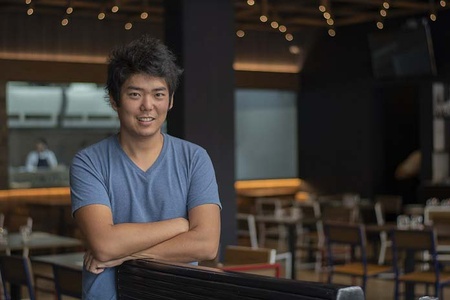The news coming from Peru at this time is not very auspicious: more than 32 thousand deaths before entering the seventh month of quarantine (the third since the focused quarantine was applied), increase in unemployment (between April and June they were left without work) and there is still speculation about a second wave of infections. In this scenario, many Peruvians have had to continue working despite the pandemic, which has brought good and bad news.
To the reopening of restaurants, with a capacity of 40%, which began on July 20, extensions in opening hours have been added (until 11 pm on weekdays) and the suspension of the Sunday quarantine for home deliveries. With the 'new normal' has come a series of protocols that aim to be permanent and to which the public and restaurateurs are beginning to get used to.
At the Doomo Saltado restaurant in Lince, for example, there were already practices such as the use of masks and gloves in the kitchen for sanitary control of food. Now, in addition to spacing the distance between the tables, Edinho Hayashida, restaurant manager, says that the dishes arrive with metal domes to protect them until they are in front of the customer. “We decided to close before the quarantine started in March as a precaution because we didn't know how to take care of ourselves or how serious the virus was.”

Since then, some things have changed, but at Doomo Saltado there were practices that already aimed to provide quality service, such as the use of disposable containers made from plants (including napkins and cutlery). “Happily, we were already delivering with a call center, which was 10% of sales and at one point it was 100% due to the quarantine. Now it is at 40% with the restart of care in the salon,” he comments.
Knowing the client
One of the products that were already common among lovers of Nikkei cuisine were onigiri. Many brands have continued to offer their products in stores, such as Fugu , by Kenny Kuahara and Sergio Kanashiro. Sergio says that due to the pandemic, many stores where they offered their product stopped serving. “Since we started we have had fifteen points of sale, now they remain at three, but we have increased direct sales,” he comments.

This has helped them know their customers better and be able to develop other fillings for onigiri and other additional products. From the classic tuna with mayonnaise, to pork with miso, teriyaki chicken and fried onigiri, also stuffed with pork with miso, but fried on the outside. They also offer a mini bento of chicken karage, vegetable tempura, tamagoyaki and a choice of onigiri.
“Every day we produce onigiris, we have gone from making 200 a day to almost half that number. We sell more through social networks and we make deliveries in private vehicles to avoid possible contagion,” says Sergio, who comments that they continue to develop new flavors of onigiris, including a vegan one. Some of the points of sale where Fugu onigiris can still be found are Tiendita Nikkei, Barrio Nikkei, Tenshi Japanese Market , among others.
From the market to the world
In July, two Nikkei chefs became known around the world thanks to Netflix and its program Street Food: Latinoamerica , whose edition in Peru included Angélica Chinen, from the Huerta Chinén restaurant, located in market No. 2 in Surquillo, and the restaurant next to Tomás 'Toshi' Matsufuji “To the fish”, in the same district. Despite the temporary closure, both are already serving their usual customers.

“I've been in the market for 35 years, being here is my best therapy,” says Angélica Chinén in the documentary that highlights her combined dishes, where Peruvian Creole cuisine shows its mixtures of stews (adobo, dry, pickled), meats (chicken, beef, lamb), tubers (potatoes, cassava, sweet potato) and side dishes (rice, almost always) that attract diners with a good appetite. Their audience has had to adapt to home delivery or store pickup.
“I like simplicity in life,” says Toshi Matsufuji, in charge of a small, humble restaurant (“everything is ugly,” he repeats in the documentary), which since it opened in 2012, has captured the attention of the loving public. of marine food (cebiche, squid crackling, rice with seafood) served on divided plates. He uses the catch of the day and, at the beginning of the quarantine, he had to close his store, but he has already been operating, with the simplicity as always, since the end of July, with store pickup.
Back to the neighborhood
The Nakachi restaurant is emblematic for the Nikkei community, not only because it has been in the Peruvian Japanese Cultural Center since 1979, but because it has been an ideal space for the meeting of many isei and nisei since Toshi Nakachi took over, when there were no more of five Japanese cuisine restaurants in Peru. In the late 1990s, it began incorporating Creole dishes and since then its chicharrón and breaded sandwiches have become as popular as its teishoku, katsudon and yakisoba.
“Due to the quarantine we had to close the restaurant, we returned to serving in August only for delivery and since September on the premises,” says Toshi, who for the first time included store pickup and home delivery, mainly for customers from all over the country. life and some neighbors. “We dedicated ourselves to renovating part of the restaurant, it has been like starting over,” says Toshi, whose sales have been increasing little by little.
With the cultural center still unattended, and the new rule to expand restaurant capacity to 50% by October, the restart of activities is slow, but Toshi hopes that everything can normalize as the days go by, although He knows that there are things that will not be the same. The most sensitive for him must be the death of his mother, Kiyomi Morimoto of Nakachi, 98 years old, who will no longer be at one of the tables of the family business.
Cooking and solidarity
It is not easy to face these hard times that have meant the closure of businesses and the change of direction of others. Fortunately, some restaurants have managed to continue serving, thanks to support from different fronts. Edinho Hayashida says that, thanks to an agreement with the Pacific Cooperative, his team personnel were able to buy motorcycles before the quarantine, with which they have been able to continue their work as delivery drivers.

In addition, at Doomo Saltado they kept their entire menu available, including a dish that is part of the “Papas Maestras” program, which allocates a percentage of sales to the Enseña Perú program, which seeks to bring quality education to the communities most geographically remote from the cities. "The only way to improve Peru is with education, we have been with Enseña Perú since 2018, and we also allocate 15% of the sales of our Doomo Shop to them, where we offer products from young Peruvian artists."
© 2020 Javier García Wong-Kit






